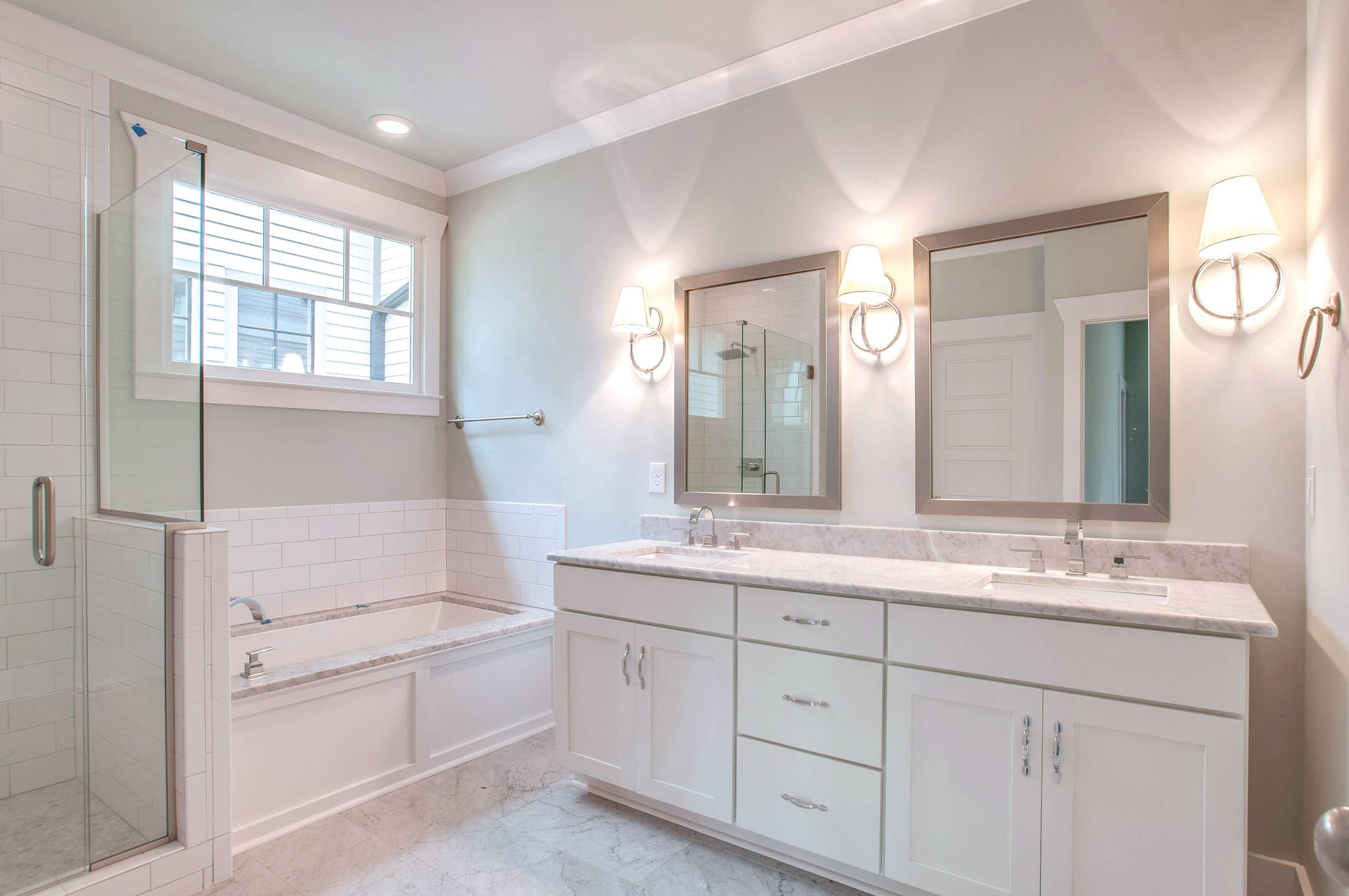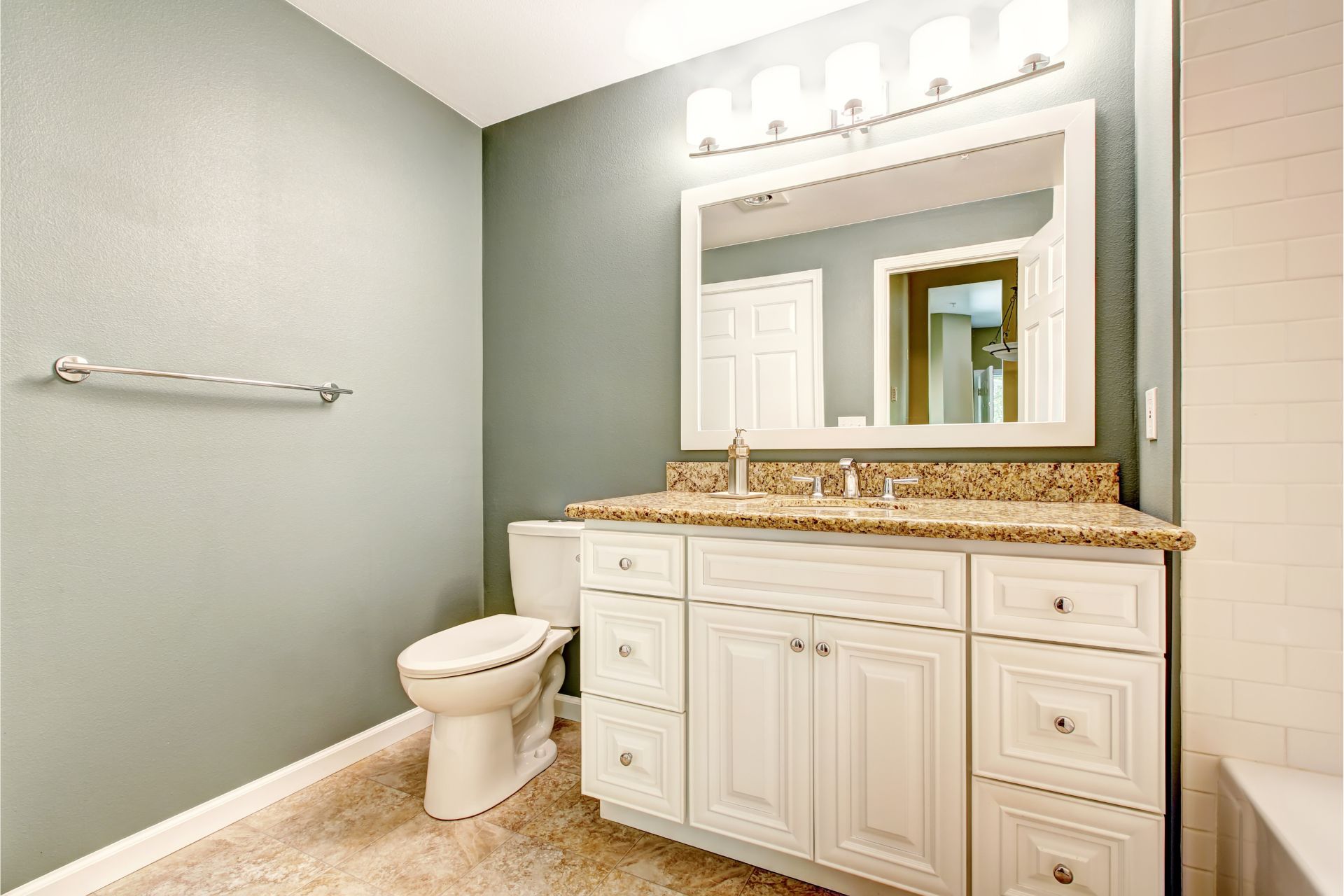Factors Affecting Difficulty

Replacing a bathroom vanity can be a relatively straightforward DIY project, but the difficulty can vary depending on several factors.
Is it hard to replace a bathroom vanity – The size, weight, and complexity of the vanity, along with the condition of the existing vanity, can all play a role in the overall difficulty of the task. Additionally, the age and condition of the plumbing and electrical connections, as well as the layout of the bathroom itself, can significantly impact the complexity of the project.
Comparing Difficulty in New Construction vs. Older Homes
Replacing a vanity in a new construction project is generally easier than in an older home. This is because the plumbing and electrical connections are typically more accessible and straightforward in new construction. In older homes, the plumbing and electrical systems may be more complex and require additional work to access and modify.
Challenges in Small Bathrooms or Bathrooms with Limited Access
Replacing a vanity in a small bathroom or a bathroom with limited access can present additional challenges. In small bathrooms, maneuvering the new vanity into place can be difficult, and there may be limited space for working on the plumbing and electrical connections. Bathrooms with limited access may require the removal of other fixtures or furniture to gain access to the vanity, adding to the complexity of the project.
Steps Involved in Replacing a Vanity

Replacing a bathroom vanity can be a significant improvement project, enhancing the functionality and aesthetics of your bathroom. This process involves disconnecting utilities, removing the old vanity, installing the new one, and reconnecting utilities. It is essential to follow the steps carefully and prioritize safety throughout the process.
Disconnecting Utilities
Before beginning the vanity replacement, it is crucial to disconnect all utilities to the existing vanity, including plumbing and electrical connections. This step ensures safety during the removal process and prevents potential damage to the new vanity.
- Turn off the water supply: Locate the shut-off valve for the bathroom sink and turn it off completely. To confirm the water is off, open the faucet to drain any remaining water in the pipes.
- Disconnect the drain pipes: Unscrew the drain pipes from the vanity and the P-trap, if applicable. You may need a wrench or pliers to loosen the connections.
- Disconnect the water supply lines: Detach the water supply lines from the faucet using a wrench or adjustable pliers. It is advisable to use a bucket or towels to catch any dripping water.
- Disconnect the electrical connections: If your vanity has a light fixture or an electrical outlet, turn off the power at the circuit breaker and disconnect the wires. Use a voltage tester to confirm the power is off before working with the wires.
Removing the Old Vanity
Once the utilities are disconnected, you can begin removing the old vanity. This step may require assistance, depending on the size and weight of the vanity.
- Remove the countertop: If the countertop is separate from the vanity base, remove it first. Carefully lift the countertop off the vanity base, ensuring not to damage the surrounding area.
- Remove the vanity base: Unscrew the vanity base from the wall using a screwdriver or wrench. If the vanity is secured with anchors, use a hammer to tap them out gently.
- Remove the mirror and accessories: If the vanity includes a mirror or other accessories, remove them carefully, ensuring not to damage them or the surrounding area.
Installing the New Vanity
With the old vanity removed, you can begin installing the new vanity. Ensure that the new vanity is compatible with the existing plumbing and electrical connections.
- Position the new vanity: Carefully position the new vanity against the wall, ensuring it is level and plumb. Use a level to check for evenness.
- Attach the vanity to the wall: Secure the vanity to the wall using screws or anchors. If the vanity has adjustable legs, ensure they are adjusted to the correct height.
- Install the countertop: If the countertop is separate, carefully place it on the vanity base, ensuring it is properly aligned. Secure the countertop using the provided hardware.
- Install the mirror and accessories: Install the mirror and other accessories according to the manufacturer’s instructions.
Reconnecting Utilities
After the new vanity is installed, you can reconnect the utilities.
- Reconnect the water supply lines: Attach the water supply lines to the faucet, ensuring they are tightly secured.
- Reconnect the drain pipes: Connect the drain pipes to the vanity and the P-trap, ensuring they are securely fastened.
- Reconnect the electrical connections: If your vanity has a light fixture or an electrical outlet, reconnect the wires, ensuring they are properly insulated and secured.
- Turn on the water supply: Turn on the water supply at the shut-off valve and check for any leaks.
- Test the electrical connections: Turn on the power at the circuit breaker and test the electrical connections.
Tools and Materials
The following table lists the tools and materials you will need for the vanity replacement project:
| Function | Tools and Materials |
|---|---|
| Plumbing | Adjustable wrench, channel-lock pliers, plumber’s tape, bucket or towels, drain pipe cleaner, pipe sealant, P-trap (if needed) |
| Electrical | Voltage tester, wire strippers, electrical tape, wire connectors, screwdriver |
| Demolition | Hammer, pry bar, screwdriver, wrench |
| Installation | Level, tape measure, drill, screwdriver, screws or anchors, caulking gun, silicone sealant |
Safety Precautions
Replacing a bathroom vanity involves working with utilities and potentially hazardous materials. It is essential to prioritize safety throughout the process.
- Turn off the water supply: Before working with any plumbing, turn off the water supply at the shut-off valve.
- Disconnect the electrical connections: Before working with any electrical wiring, turn off the power at the circuit breaker.
- Wear protective gear: Wear safety glasses, gloves, and sturdy shoes to protect yourself from potential hazards.
- Use caution with tools: Handle tools with care and avoid using them for purposes other than their intended use.
- Be aware of potential hazards: Be aware of potential hazards, such as sharp edges, heavy objects, and slippery surfaces.
Considerations for Choosing a New Vanity: Is It Hard To Replace A Bathroom Vanity

Replacing a bathroom vanity is a significant investment, so it’s crucial to carefully consider your needs and preferences before making a purchase. This will help you choose a vanity that complements your bathroom design, enhances functionality, and provides long-lasting value.
Vanity Size and Dimensions
The size of your vanity is crucial for both functionality and aesthetics. Consider the available space in your bathroom and the size of your existing vanity. If you are replacing an existing vanity, you can use the same dimensions or explore options for a slightly larger or smaller vanity, depending on your needs.
- Measure the available space in your bathroom, including the width, depth, and height.
- Consider the size of your bathroom fixtures, such as the sink, faucets, and mirrors.
- Choose a vanity that fits comfortably within the available space, allowing for sufficient room for movement and access to fixtures.
- If you have limited space, consider a smaller vanity with a single sink or a floating vanity that saves floor space.
Vanity Style and Design
The style of your vanity should complement the overall design of your bathroom. There are many different styles available, from traditional to contemporary, rustic to modern.
- Consider the existing decor in your bathroom, including the color scheme, flooring, and fixtures.
- Choose a vanity that complements the existing style or creates a desired contrast.
- If you are updating your bathroom, consider a vanity that reflects your personal taste and style preferences.
- Think about the overall mood you want to create in your bathroom, such as a serene and relaxing atmosphere or a bold and contemporary feel.
Vanity Materials, Is it hard to replace a bathroom vanity
The material of your vanity will impact its durability, appearance, and price. Some popular vanity materials include wood, laminate, and stone.
| Material | Pros | Cons |
|---|---|---|
| Wood | Natural beauty, durability, can be customized | Higher cost, susceptible to moisture damage |
| Laminate | Affordable, moisture-resistant, easy to clean | Less durable than wood, can look artificial |
| Stone | Elegant and luxurious, durable, resistant to moisture | High cost, heavy, can be cold to the touch |
Vanity Functionality
Beyond aesthetics, consider the functionality of your vanity. Features like storage space, countertop size, and sink design can significantly impact your daily bathroom experience.
- Assess your storage needs and choose a vanity with ample drawers, cabinets, and shelves.
- Consider the size and shape of the countertop to accommodate your bathroom essentials.
- Select a sink that meets your preferences, such as a single-bowl, double-bowl, or vessel sink.
- Think about the type of faucet you want, including the style, finish, and functionality.
Choosing a Vanity That Complements Your Bathroom Decor
To ensure your new vanity seamlessly blends with your existing bathroom design, consider the following tips:
- Color: Choose a vanity color that complements the existing color scheme of your bathroom. You can opt for a matching color, a contrasting color, or a neutral color that blends well with other elements.
- Style: Select a vanity style that complements the overall style of your bathroom. For example, a traditional bathroom might suit a vanity with ornate details, while a modern bathroom might benefit from a minimalist vanity with clean lines.
- Materials: Choose a vanity material that complements the existing materials in your bathroom. For instance, a wooden vanity might complement a bathroom with wooden floors, while a stone vanity might suit a bathroom with marble countertops.
